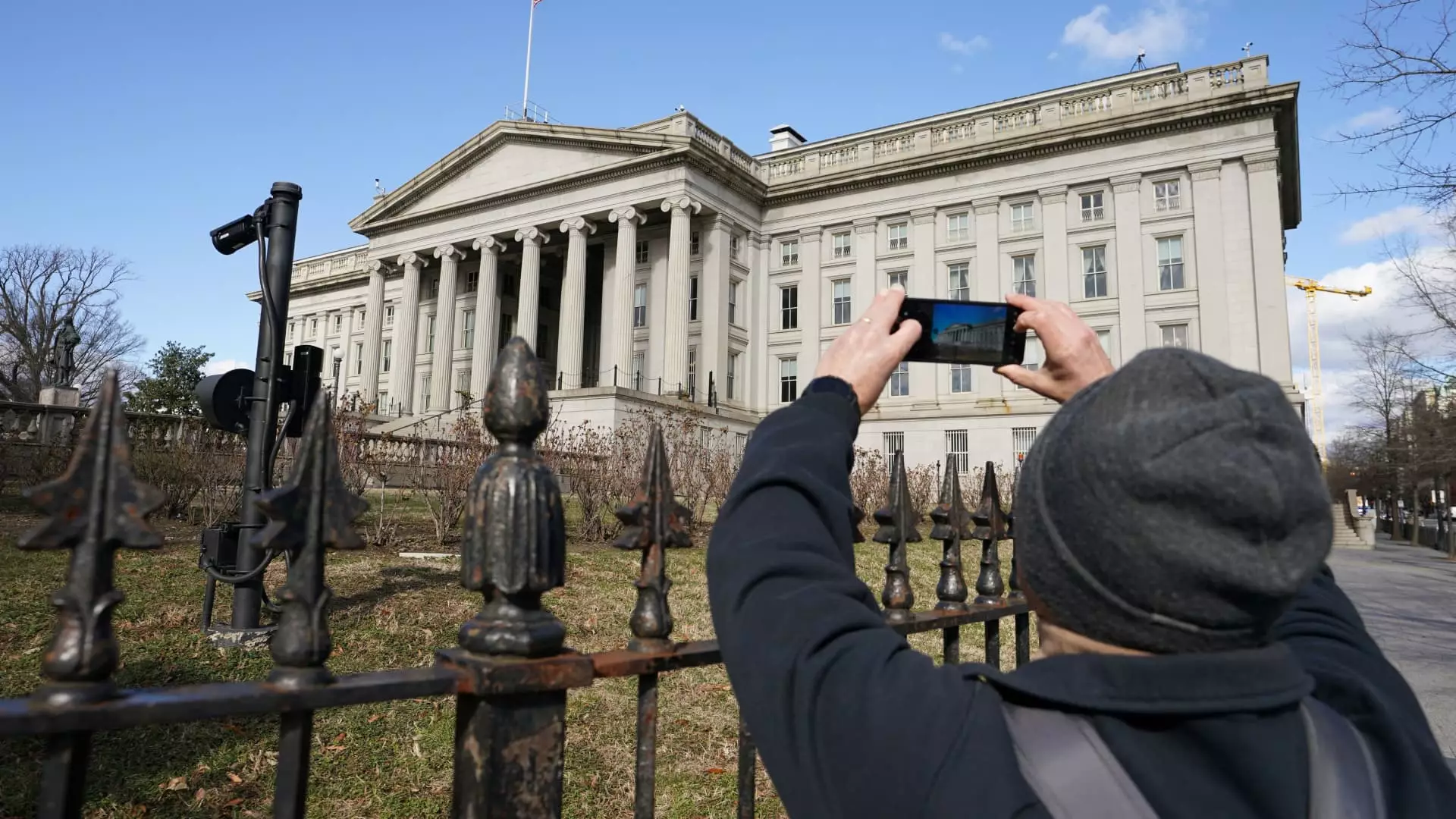In the intricate world of finance, the bond market is often perceived as the more sedate counterpart to the exhilarating stock market. However, recent fluctuations are sending ripples through investor confidence, particularly regarding longer-duration bonds. With the Federal Reserve’s economy-wobbling maneuvers and broader market anxieties, a consensus is emerging among seasoned investors: now is not the time to chase long-term bonds. Instead, the focus should shift toward short-term investments. Industry experts like Joanna Gallegos, CEO of BondBloxx, emphasize that sticking to shorter maturities may offer both stability and reliable yields amid the chaos.
The allure of short-term Treasury bills is palpable. Currently, the 3-month T-Bill boasts an impressive yield exceeding 4.3%, while the two-year bond offers a respectable 3.9%. Even the longer 10-year bonds are yielding around 4.4%. These figures represent a departure from the long-duration bonds that have historically lured in investors, but the cautionary sentiments voiced by financial gurus indicate an impending shift in investment strategy.
ETF Flows: A Clear Indicator of Market Sentiment
A closer inspection of exchange-traded funds (ETFs) reveals a telling trend. The iShares 0-3 Month Treasury Bond ETF (SGOV), along with the SPDR Bloomberg 1-3 T-Bill ETF (BIL), have surged into the top 10 desired investments this year, collectively absorbing more than $25 billion in assets. This trend is reinforced by the observation that only Vanguard’s S&P 500 ETF has garnered more fresh capital. The preference for ultra-short-term bonds suggests an underlying anxiety—investors are steering clear of long durations, perhaps recognizing that the bond market is experiencing an unusual level of turbulence.
Todd Sohn from Strategas Securities encapsulated the current sentiment succinctly: “Long duration just doesn’t work right now.” The resonance of this statement is not only a commentary on market conditions but also a flashing caution light for overzealous investors clinging to outdated strategies.
The Hidden Risks of Ignoring Fixed Income
Amidst this volatility, Gallegos raises a critical alarm regarding investor behavior—specifically, the alarming trend of neglecting fixed-income components in diversified portfolios. In a world becoming increasingly enamored with tech-heavy equities, where double-digit returns have spoiled investors, the neglect of bonds could lead to catastrophic repercussions. As the market sways toward riskier strategies, it runs the perilous risk of amplifying losses during downturns.
The necessity of a balanced portfolio becomes even more critical in the face of historic volatility. The S&P 500 has demonstrated erratic behavior, experiencing dramatic highs and plummeting lows within just a few months. For those unwilling to diversify, the resulting fallout could be disastrous, echoing sentiments of financial prudence from past crises.
Looking Beyond Domestic Horizons
In addition to the urgency surrounding domestic bonds, there is also an opportunity lurking in international investments. Investors are encouraged to look beyond U.S. equities, particularly when global markets also present lucrative options. European and Japanese equities have recently gained prominence, counterbalancing risks inherent in U.S. high-growth sectors. Companies within these regions have experienced their own robust recoveries, and ETFs that track these markets are demonstrating promising returns, such as the iShares MSCI Eurozone ETF appreciating by 25% this year.
The push by seasoned investors to diversify geographically is a robust counter-narrative to rampant investment in U.S. large-cap growth. As Sohn candidly points out, “Investors don’t have to be loaded up on U.S. large-cap growth right now,” serving as a reminder that the world is vast, and opportunities are myriad—if one only has the vision to look beyond familiar shores.
The Ripple Effect of Market Jitters
Market conditions that stir fear and hesitation often unveil deeper systemic issues, from fiscal policies to government expenditures. The sting of inflation looms large, especially given recent tariffs and looming tax bills. History provides a grim reminder: the last time long-term treasuries faced this kind of volatile spell was during the financial crisis. As inflation resurges and government spending swells, it becomes clear that the bond market is not merely a reflection of simple economic relationships but a complex web of interdependencies.
Given the current landscape, the pathway ahead appears rugged. For investors aiming to maintain their portfolios’ health, a careful reassessment of strategies, particularly those involving bonds, is imperative. The challenge remains—how to adapt to a landscape where safety nets seem to erode right before our eyes? The age-old adage rings truer than ever: it’s time to rethink our investment paradigms with a sobering perspective on what the future may hold.

